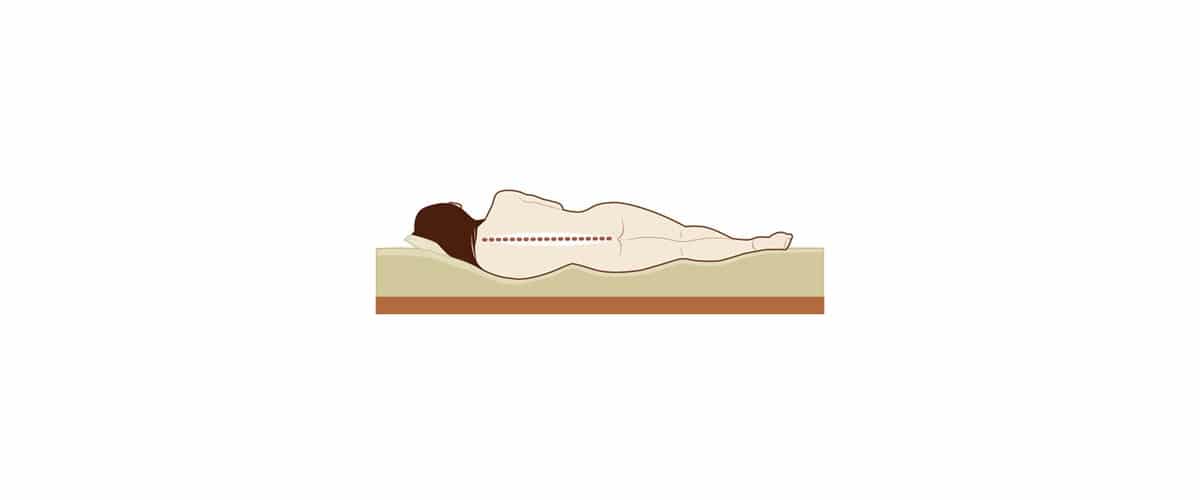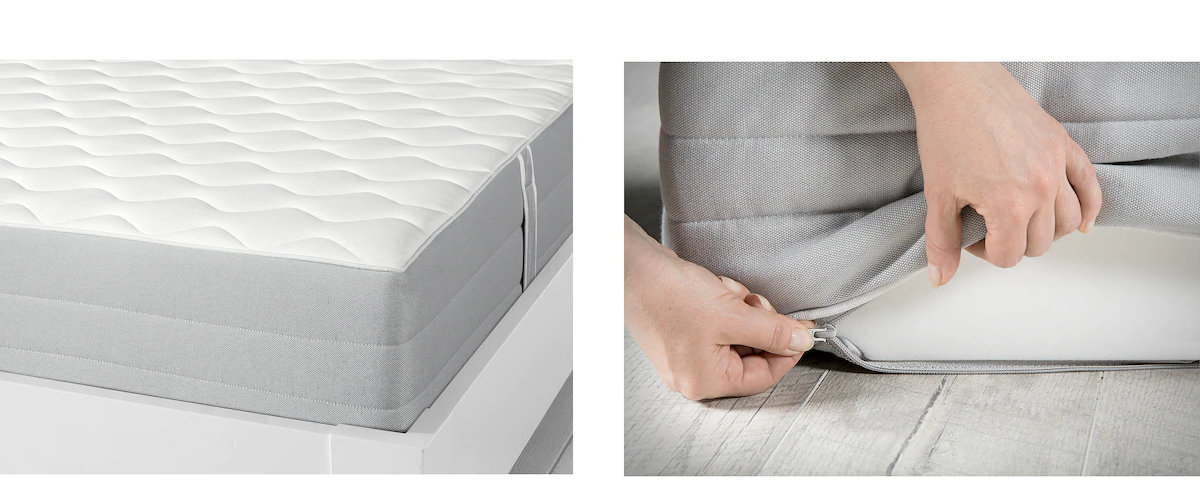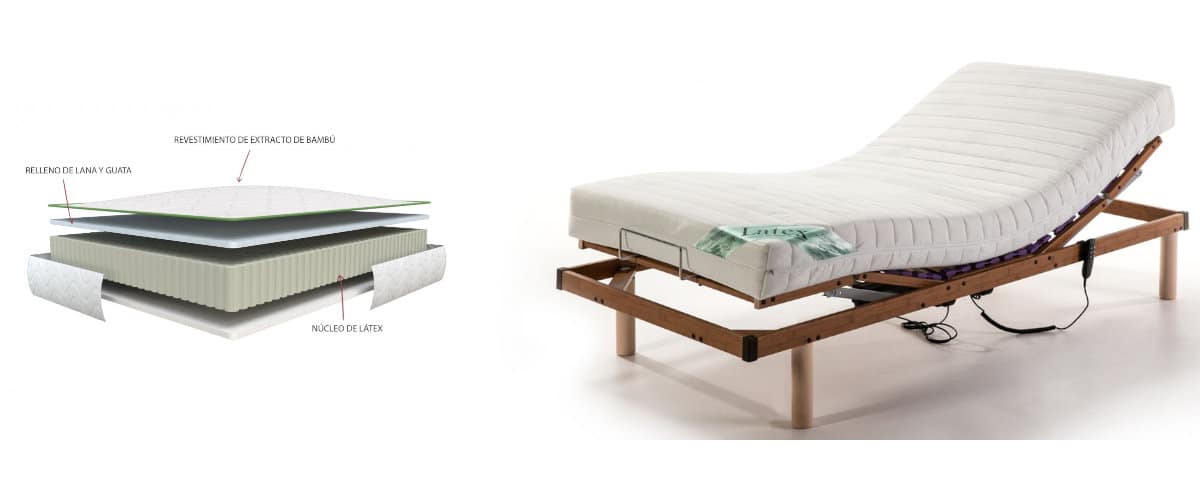
Choosing the right mattress It will allow us to rest better, thus increasing our quality of life. We should not, therefore, take their choice lightly. Knowing the characteristics of the different types of mattresses and taking the time to test them in the store is key to getting it right.
The mattress offering is vast and it can be overwhelming to make a decision. Factors such as our weight, the posture we adopt at bedtime or the ambient temperature, are decisive. They will help us make the best decision about firmness and material of the mattress, as we develop below.
Firmness
A good mattress should distribute body weight in the right way. In other words, it should be firm enough to support the body well, but not so firm that it is uncomfortable. The choice of it will therefore have two components: an objective one related to our weight and a subjective one, which will depend on our preference.

It is important that the mattress respects the cnatural urvature of the spine vertebral, face up and aligned while sleeping on your side. If the mattress is too hard, it will not conform to your body. This will improve the aeration of the same (something important in very hot environments), but it could translate into a not very good rest.
Types of mattresses according to the material
The material will be decisive in choosing a good mattress. Did you know that spring mattresses are cooler? And which models made of foam or viscoelastic material store more heat? And which latex mattresses are the most appropriate for allergy sufferers? There are different types of mattresses and knowing their particularities will help you choose one.
Spring mattresses
The simplest spring mattresses have a core formed by metal springs placed vertically, linked to each other by metallic threads, covered by several layers of foam or cotton. They offer good support and a good ventilation, so they are suitable for all those people who sweat easily or who live in hot places. Known as independent spring mattresses or continuous spring mattresses they are relatively inexpensive.

Slightly more expensive are pocket spring mattresses, made up of hundreds of independent springs collected in individual cloth bags joined together. Like the previous ones, they adapt well to the shape of the body and offer good ventilation, also maintaining good independence of movement in a double bed. However, these usually present a better coating made with different materials that makes them halfway between the spring mattresses and those of foam or latex.
Polyurethane foam mattresses
These mattresses are made up of small cells or air bubbles and cohesive agents. The firmness of the mattress will depend on the number and size of these cells, as well as the type of binding agent. Densities lower than 40kg / m3 should not be considered unless the mattress is intended for a small child or a bed for temporary use. It is also important to know that the lighter it is, the worse the mattress will age.

Foam mattresses can be a good choice in cold places. Both these and the memory foam or those made of latex save more heat than spring mattresses.
Memory foam mattresses
Made with a special foam, they mold to the body offering a optimal distribution of body weight. It is characterized by reducing pressure points in the heaviest areas and by adapting to the temperature of the person resting on them.

They are very appropriate mattresses for those who spend a lot of time in bed or those who need a articulated bed, to which they adapt without problems thanks to its flexibility. You should know, however, that they are more expensive than the previous ones. A 90 x 190 cm mattress can cost you 800 euros.
Latex mattresses
Latex mattresses are made of natural or synthetic latex foam and auxiliary materials used in different proportions. They offer a fairly firm support, but at the same time they are very flexible and they adapt well to the contours of the body, distributing pressure evenly. They are a very good option for those who move a lot at night and for double beds in which the components of the couple have different weights.

They are very elastic so they are recommended in articulated beds. They are also recommended for people with respiratory allergies or asthma, since they help us avoid the risk of colonies of mites that form inside the springs. However, they are prohibited for those allergic to latex. The only drawbacks of these mattresses are their price and their weight, which together with their flexibility makes them difficult to handle.
Whatever your choice, take the time to test the different types of mattresses before buying one. Don't be ashamed to lie down and try them in different positions. Only then will you be able to know which is the one that best suits you and is more comfortable for you.